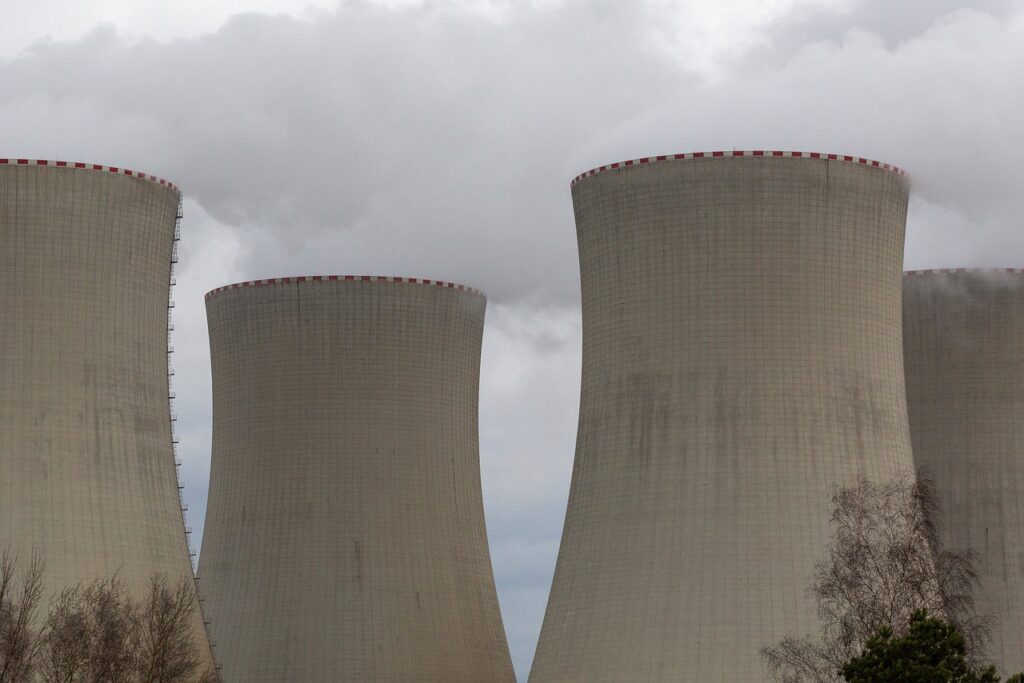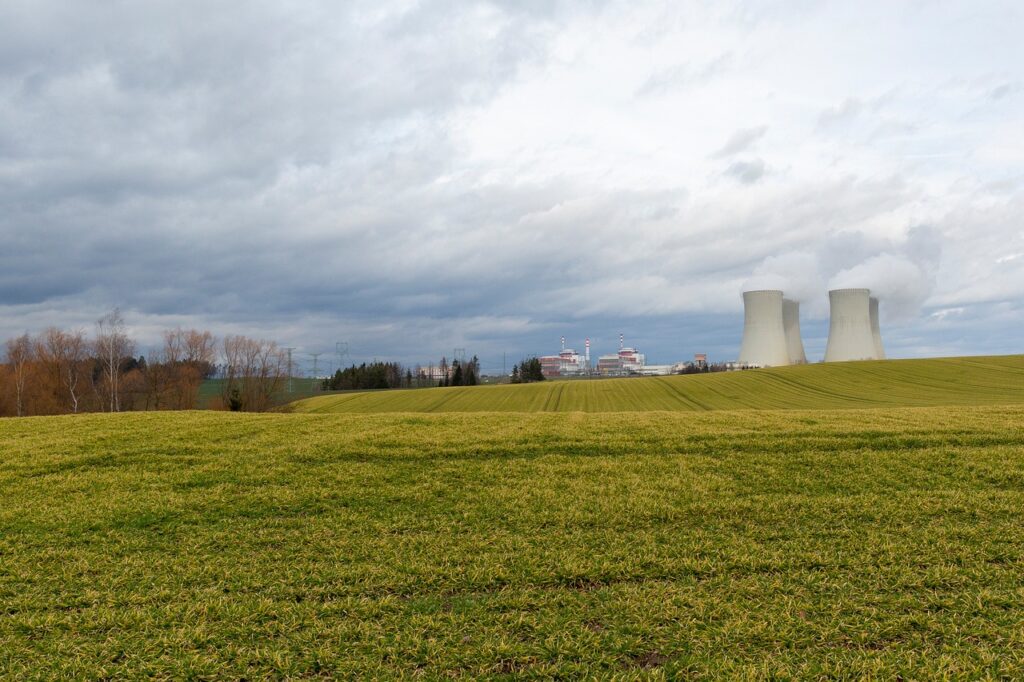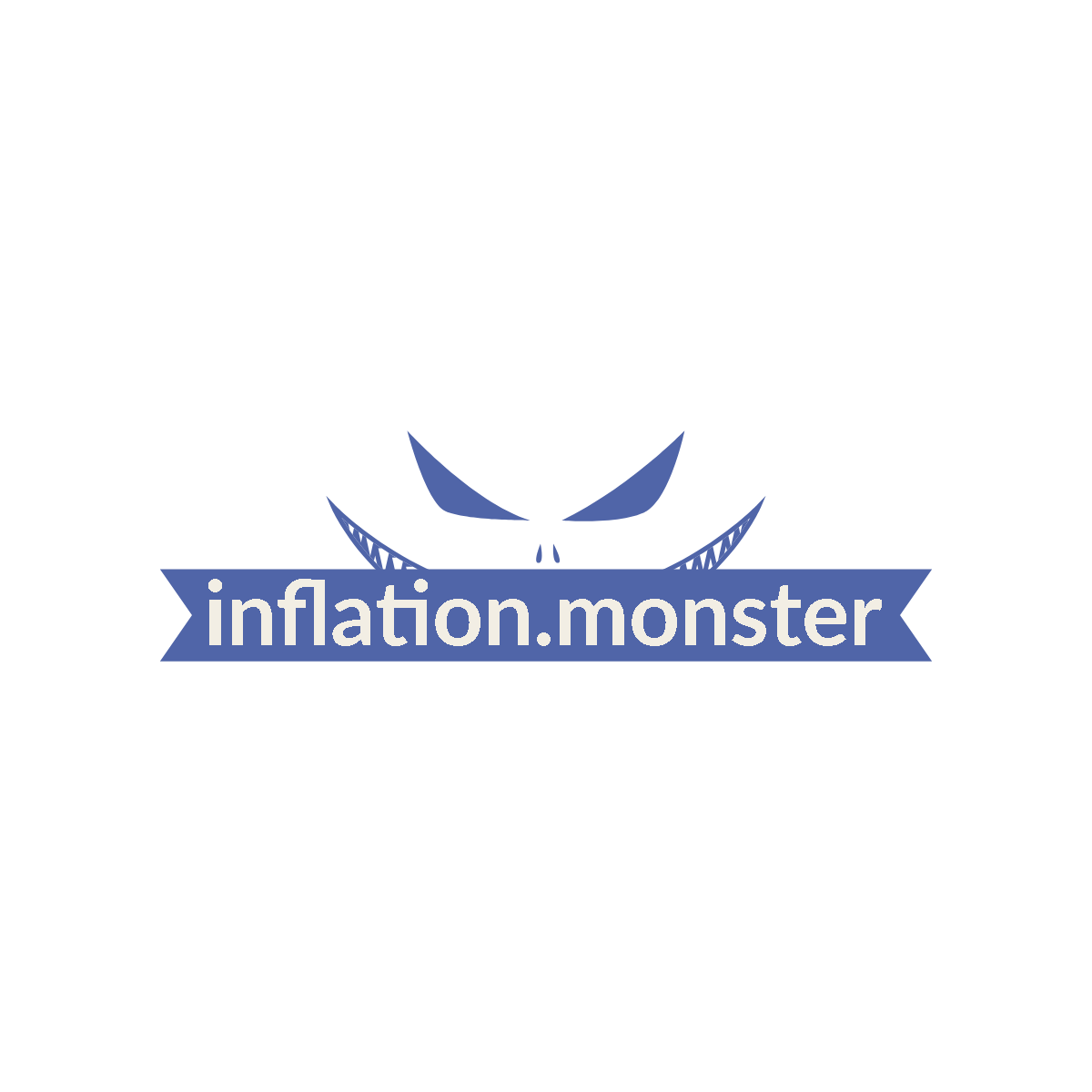Inflation and the energy market are two intertwined elements of the ever-changing financial landscape that can have a significant impact on our daily lives. As we explore the depths of these complex phenomena, we begin to unravel the mysteries behind the inflation monster and its relationship with energy prices. Join us on this enlightening journey as we delve into the world of inflation and the energy market, uncovering the intricate price fluctuations that shape our economy. Brace yourselves for a captivating exploration that will equip you with invaluable knowledge to navigate the turbulent waters of money and economics.

Introduction to Inflation and the Energy Market
Inflation and the energy market are two intertwined aspects of the economy that have a significant impact on individuals, businesses, and economies as a whole. Understanding the relationship between these two variables is crucial for making informed economic decisions and predicting future trends.
Understanding Inflation
Inflation refers to the sustained increase in the general price level of goods and services in an economy over time. It leads to a decrease in the purchasing power of a currency, as more money is required to buy the same amount of goods or services. Inflation is often measured using the consumer price index (CPI) or the producer price index (PPI).
The Energy Market and its Significance
The energy market is a vast sector that encompasses the production, distribution, and consumption of various types of energy, including oil, gas, coal, and renewable sources. Energy is not only a crucial input for businesses but also a necessity for individuals in their daily lives. Therefore, fluctuations in energy prices have far-reaching consequences for both consumers and businesses.
The Relationship between Inflation and Energy Prices
There is a direct and complex relationship between inflation and energy prices. Changes in energy prices can have a significant impact on inflation rates, while inflation itself can influence energy prices. The interplay between the two variables is influenced by several factors and can lead to various consequences for different stakeholders in the economy.
Factors Influencing Energy Prices
Several factors influence energy prices, leading to fluctuations in the market. Understanding these factors is essential for comprehending the dynamics of energy prices and their impact on inflation.
Supply and Demand Dynamics
One of the primary factors influencing energy prices is the interplay between supply and demand. When demand for energy rises, and supply cannot keep up with it, prices tend to increase. Conversely, when there is a surplus of energy supply, prices may decrease. Factors such as population growth, economic expansion, and seasonal variations can affect supply and demand dynamics.
Geopolitical Factors
Geopolitical events and conflicts in energy-producing regions can significantly impact energy prices. Political instability, wars, sanctions, or disruptions in the supply chain can trigger price fluctuations. For example, tensions in the Middle East have historically led to spikes in oil prices, affecting the global energy market and inflation rates.
Weather Conditions
Weather conditions, particularly in the case of renewable energy sources such as hydroelectric power or solar energy, can have a significant impact on energy prices. Droughts, floods, extreme temperatures, or natural disasters can affect the production and distribution of energy, leading to price fluctuations.
Technological Advances and Innovation
Technological advancements and innovations in the energy sector can influence energy prices. Developments in renewable energy technologies, energy storage, and extraction methods can reduce production costs and increase energy efficiency, potentially decreasing energy prices. Conversely, disruptions or limitations in technology advancements may lead to higher energy costs.
Government Policies and Regulations
Government policies and regulations play a crucial role in shaping the energy market and, consequently, energy prices. Policy decisions related to taxation, subsidies, energy production, and environmental regulations can impact the affordability and availability of energy sources. Such policies can also influence inflation rates if energy costs directly or indirectly affect the prices of goods and services.

The Impact of Inflation on Energy Prices
Inflation can have a significant impact on energy prices through various channels. Understanding these impacts is vital for analyzing the relationship between the two variables and predicting future trends.
Cost of Production
Inflation can affect the cost of production for energy sources. As inflation drives up the prices of inputs and labor, energy producers may experience higher production costs. These increased costs can lead to higher energy prices, ultimately affecting consumers and businesses.
Transportation and Distribution Costs
Inflation can also impact transportation and distribution costs, which can have a cascading effect on energy prices. As the price of fuel increases due to inflation, transportation costs for energy sources rise. These costs can be passed on to consumers, contributing to higher energy prices.
Commodity Prices
Energy sources such as oil and gas are commodities traded on global markets. Inflation can impact the prices of these commodities, which in turn affects energy prices. Changes in commodity prices can be driven by factors such as supply disruptions, geopolitical events, or shifts in global demand. These price fluctuations can trickle down to consumers through higher energy costs.
Currency Exchange Rates
Currency exchange rates play a significant role in determining energy prices, especially for countries that import energy. Inflation can impact exchange rates, leading to currency depreciation or appreciation. A weaker currency due to inflation can increase the cost of importing energy, potentially raising energy prices for consumers.
Understanding Inflationary Pressures on Energy Markets
Different forms of inflationary pressures can influence energy markets and contribute to price fluctuations. Understanding these forms is essential for assessing the impact of inflation on energy prices.
Demand-Pull Inflation
Demand-pull inflation occurs when excessive aggregate demand exceeds the supply of goods and services in the economy. This form of inflation can lead to increased energy consumption and, subsequently, higher energy prices. Economic growth, increased consumer spending, or government stimulus measures can cause demand-pull inflation.
Cost-Push Inflation
Cost-push inflation occurs when the cost of inputs for production, such as labor or raw materials, increases. Inflationary pressures caused by rising production costs can be reflected in higher energy prices. For example, if wages rise due to inflation, energy producers may need to increase prices to maintain profitability.
Structural Inflation
Structural inflation is the result of long-term structural imbalances in an economy, such as inadequate infrastructure, supply-side bottlenecks, or market distortions. Inadequate energy infrastructure or monopolistic market practices can contribute to structural inflation in the energy sector, resulting in higher energy prices.
Hyperinflation
Hyperinflation refers to an extremely rapid and out-of-control increase in prices. While hyperinflation can significantly impact the energy market, its causes and consequences go beyond the scope of normal inflationary pressures. Hyperinflation is often accompanied by severe economic and political instability.

Historical Examples of Inflation and Energy Price Fluctuations
Examining historical examples of inflation and energy price fluctuations can provide insights into the interplay between these variables and their consequences.
1970s Oil Crisis
The oil crisis of the 1970s serves as a prominent example of how geopolitical events can lead to significant energy price fluctuations and inflationary pressures. The Organization of Arab Petroleum Exporting Countries (OAPEC) imposed an oil embargo, leading to a surge in oil prices and widespread inflationary pressures globally.
Global Financial Crisis of 2008
The global financial crisis of 2008 had profound effects on energy prices and inflation rates. The economic downturn resulted in reduced global demand for energy, leading to a drop in energy prices. However, the subsequent recovery and monetary stimulus measures undertaken by governments sparked concerns about inflation.
Economic Instability in Venezuela
Venezuela’s economic instability in recent years provides a stark example of the links between inflation and energy price fluctuations. Hyperinflationary pressures and mismanagement of the energy sector have led to severe energy shortages, increasing energy prices and exacerbating the country’s economic challenges.
Recent Fluctuations and Trends
In recent years, there have been notable fluctuations and trends in energy prices and inflation rates. Factors such as the COVID-19 pandemic, shifts towards renewable energy sources, and geopolitical tensions have impacted energy markets and inflationary pressures globally. Monitoring these fluctuations and trends is crucial for understanding the evolving nature of the relationship between inflation and energy prices.
The Role of Energy Prices in Inflationary Pressures
While inflation can impact energy prices, the reverse is also true. Energy prices play a significant role in overall inflationary pressures, affecting various segments of the economy.
Energy as an Input in Production
Energy is a key input in the production process of goods and services across industries. Changes in energy prices can have a direct impact on production costs, leading to a change in the prices of final products. Higher energy prices can contribute to inflationary pressures as businesses pass on the increased costs to consumers.
Transportation and Distribution Costs
Energy prices also influence transportation and distribution costs, which can affect the prices of goods and services. As energy prices increase, the cost of shipping and distributing products rises. This increase in costs can be passed on to consumers, contributing to inflation.
Consumer Spending Patterns
Changes in energy prices can impact consumer spending patterns, thereby influencing inflation rates. Higher energy prices can lead to reduced disposable income for individuals, resulting in decreased spending on other goods and services. Conversely, lower energy prices can provide a boost to consumers’ purchasing power.
Policy Implications and Responses
Given the significant impact of inflation and energy price fluctuations on individuals, businesses, and economies, policymakers often respond with various measures to mitigate their effects.
Central Bank Interventions
Central banks play a crucial role in managing inflation and its impact on the economy. Monetary policy measures, such as adjusting interest rates or implementing quantitative easing, can influence inflation rates and indirectly impact energy prices.
Government Subsidies
Governments may opt to provide subsidies to mitigate the impact of high energy prices on consumers. Subsidies can help alleviate the burden of increased energy costs and reduce the overall inflationary pressures on the economy.
Energy Market Deregulation
Deregulation of the energy market can promote competition and potentially lead to lower energy prices. By allowing multiple suppliers to enter the market, deregulation can create downward pressure on prices and reduce inflationary pressures related to energy costs.
Investment in Renewable Energy Sources
Investing in renewable energy sources can have long-term implications for energy prices and inflation. As the cost of renewable technologies decreases and energy efficiency improves, dependence on traditional energy sources may decrease. This transition can result in lower energy costs and reduced inflationary pressures.
Future Outlook: Predictions and Projections
While predicting the future of inflation and energy prices can be challenging, several trends and factors can provide insights into what lies ahead.
Volatile Oil Prices
Oil prices are expected to remain volatile due to factors such as geopolitical tensions, supply and demand dynamics, and shifts towards renewable energy sources. Fluctuations in oil prices can have spillover effects on other energy sources, affecting overall energy prices and inflation rates.
Renewable Energy Development
The development and adoption of renewable energy sources are expected to continue to grow. The expansion of renewable energy infrastructure and improvements in technology can contribute to more stable and potentially lower energy prices, reducing inflationary pressures.
Emerging Technologies
Advancements in energy storage, smart grids, and electric vehicles can reshape the energy landscape. These emerging technologies can enhance energy efficiency, reduce dependence on traditional energy sources, and potentially mitigate inflationary pressures related to energy costs.
Government Policies and Climate Change
Government policies aimed at mitigating climate change and transitioning to a low-carbon economy can have significant implications for energy prices and inflation. Regulations, carbon pricing, and investments in green technologies can shape the energy market and influence inflationary pressures.
Strategies for Mitigating the Impact of Energy Price Fluctuations on Inflation
To mitigate the impact of energy price fluctuations on inflation, various strategies can be implemented.
Diversification of Energy Sources
Reducing reliance on a single energy source can enhance energy market stability and reduce the vulnerability of prices to supply disruptions. Diversifying energy sources can reduce the impact of energy price fluctuations on overall inflation rates.
Enhancing Energy Efficiency
Improving energy efficiency can help mitigate the impact of energy price fluctuations on inflation. By reducing energy consumption and optimizing energy use, businesses and consumers can minimize the effects of energy price increases on production costs and daily expenses.
Investing in Infrastructure
Investing in energy infrastructure, including transmission lines, pipelines, and storage facilities, can improve the resilience and stability of the energy market. Robust infrastructure can mitigate disruptions in energy supply and limit the extent of price fluctuations.
Promoting Renewable Energy
Promoting the development and adoption of renewable energy sources can contribute to long-term price stability and reduce inflationary pressures related to energy costs. Governments, businesses, and individuals can play a role in promoting renewable energy through incentives, subsidies, and investment.
Strengthening Energy Market Stability
Enhancing transparency, promoting competition, and implementing effective regulatory frameworks can strengthen the stability of the energy market. Stable energy markets are less susceptible to drastic price fluctuations, reducing the impact on inflation.
Conclusion
Inflation and the energy market are intricately linked, with fluctuations in energy prices often leading to inflationary pressures and vice versa. Understanding the factors influencing energy prices, the impact of inflation on energy prices, and the interplay between the two variables is crucial for individuals, businesses, and policymakers. By monitoring historical examples, predicting future trends, and implementing appropriate strategies, stakeholders can navigate the complexities of inflation and energy price fluctuations, mitigating their impact on economies and ensuring sustainable growth.




